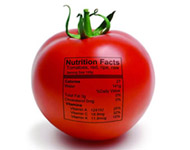Nutrition and Health Sciences, Department of

Department of Nutrition and Health Sciences: Faculty Publications
Document Type
Article
Date of this Version
2010
Abstract
Validation of the nutrition standardized language (SL) confirms the language is accurate for use in practice, research, and policy. Nutrition diagnostic terms are identified by concept analysis using literature review and experts to distinguish and differentiate one nutrition problem from a similar or related problem. The Fehring models, used in nursing diagnosis validation research, are adopted to validate the SL nutrition diagnostic terms using experts and weighted inter-rater reliability ratios. In the first phase of validation research, diagnostic terms are validated by experts using the Diagnostic Content Validity Model (DCV). A Nutrition Diagnosis Validation Instrument (NDVI) is developed that contains the definition, etiologies, and signs and symptoms (s/s) of the diagnosis plus items added from literature review. Questions regarding clarity and completeness of the term are included. The NDVI uses a Likert-type scale with assigned weights to derive a DCV score. Using the weighted mean score, each item is classified into major (≥ 0.80), minor (0.50 to 0.79), or non- relevant (below 0.49) characteristics. The Clinical Diagnostic Validation Model (CDV) is employed in the second phase to validate the term in the clinical setting observing patients with the nutrition problem using the NDVI, expert dietitians and a CDV score. Use of the DCV and CDV Models provides clear, comprehensive and observable lists of defining s/s needed for accurate and valid SL diagnostic terms and allows comparisons between studies.


Comments
Published in Journal of the American Dietetic Association, Volume 110, Issue 9, Supplement 1 (ADA Food & Nutrition Conference & Expo), September 2010, p. A79; doi:10.1016/j.jada.2010.06.298 Copyright © 2010 Arthroscopy Association of North America; published by Elsevier Inc. Used by permission.